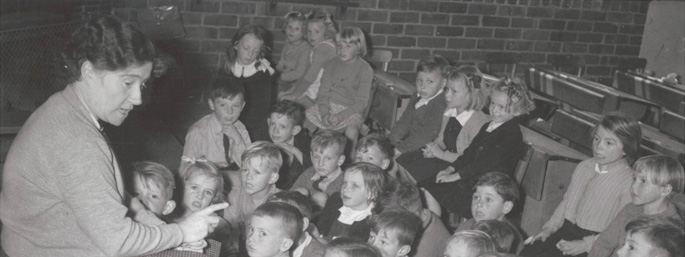There can be no question: words matter. But until recently, scant attention has been paid to the vocabulary used to describe educational change, particularly those terms that have calcified in the last decade or so that are now helping shape an increasingly reductionist debate.
Here’s a primer: Those opposed to broad-based changes to policies often say these policies are based in fealty to “free markets,” beloved by “corporate reformers” who favor “privatization and profit.” Enthusiasts for reform policies often say their opponents are protecting the “status quo.”
Sometimes there’s a kernel of truth to these terms. But I think almost none of the vocabulary is broadly accurate, and that the constant misrepresentation of ideas has so dumbed down the debate, it’s difficult to have an honest argument. What we have are exchanges of loaded terms that whip up the partisan faithful and make our field seem dysfunctional.
Consider the “free market.” Were that really a primary strategy, we should see lots of folks fighting against any sort of regulation on the premise that the market itself will arbitrate among various options, elevating the most efficient ones. While there are some who take this position, there aren’t many. They certainly don’t constitute a powerful bloc.
But in fact, those who push the hardest for change in education often do so through regulation. They want common standards and assessment. They want robust entities to authorize charter schools and publish their results. They support requirements that teacher evaluations include certain factors, such as student learning.
There are plenty of legitimate shortcomings of what’s often called education reform, but free market fervor is not among them. Proponents more frequently see competition as a helpful ingredient as long as it occurs in a carefully regulated arena. We can have all sorts of debate about whether competition helps and whether there is the right level of regulation. But if your target is the free market agenda, you are aiming at a phantom.
The concept of privatization is similar. The term can suggest that publicly administered, non-profit functions are being transferred to private, profit-making entities. Is that happening on a broad scale in education?
It’s important to acknowledge that education has always involved plenty of private, profit-making entities. There are textbook vendors, foodservice vendors, technology vendors, furniture vendors and No. 2 pencil vendors, just for a start. What’s becoming more private these days, we are told, is the operation of the schools themselves.
Maybe so. For example, many people see charter schools as private because they are non-governmental. Sometimes, when faced with union organization, charters have even argued themselves that they are private. It’s also true that a small number of charters (concentrated in a couple of states) are run as profit-making enterprises.
But many others don’t see charters as private. They are public charter schools, after all. They don’t charge tuition or set admission criteria. Students take the same tests as peers in district schools, and the results are made public the same way. They can be audited or closed by their authorizers. The vast majority of charters, including the ones most casual observers have heard about (KIPP, Achievement First, Uncommon Schools, Aspire, Noble Street) are non-profit.
So does the creation of charter schools constitute privatization? Certainly not in the same sense as privatizing social security. On the contrary, charter schools should be pushing us to renew our faith and expand our thinking about what public institutions can do, because as public schools, they operate in a highly regulated, taxpayer-supported system, yet have relative freedom to manage their own affairs. But it becomes pretty difficult to have any rational discussion about charters when much of the public has been led to believe they are a gambit by fat cats to funnel public dollars into the pockets of already wealthy individuals.
These tendencies pop up across the ideological spectrum. Think about the evil “status quo.” Our Secretary of Education, whom I like very much, refers to the status quo as often as Bill Murray curses varmints in Caddyshack. But I am not sure it refers to a real position.
Many have pointed out that those who oppose today’s policy direction are not in favor of maintaining the system, so to speak, as it is. They hate the present system, which they see as being in the midst of a decade or more of steady negative change: from NCLB to Common Core to new teacher evaluation systems. They would say they are trying to change that system, not protect it.
When people refer to the “status quo,” they are usually describing what they see as terrible outcomes and a durable resistance to change. To them, even if some shifts have taken root, they are trivial in comparison to what’s needed.
Either way, it would be more productive to put forth specific policies that need to be changed, whether that means more hiring autonomy for school leaders or pay scales that allow excellent teachers to make more money sooner. Here is my position: our dialogue will be more interesting, dynamic and satisfying if we are precise about our vocabulary. Public understanding of these issues suffers when we use hackneyed terms that are neither accurate nor informative. And critics who oppose various reforms would do well to use rhetoric that sells a particular position rather than sloppily demonizing what their opponents supposedly think.








